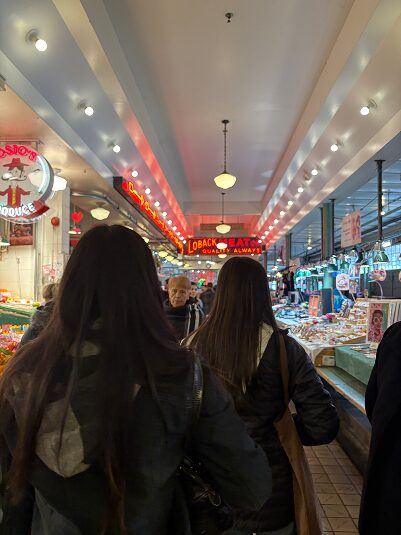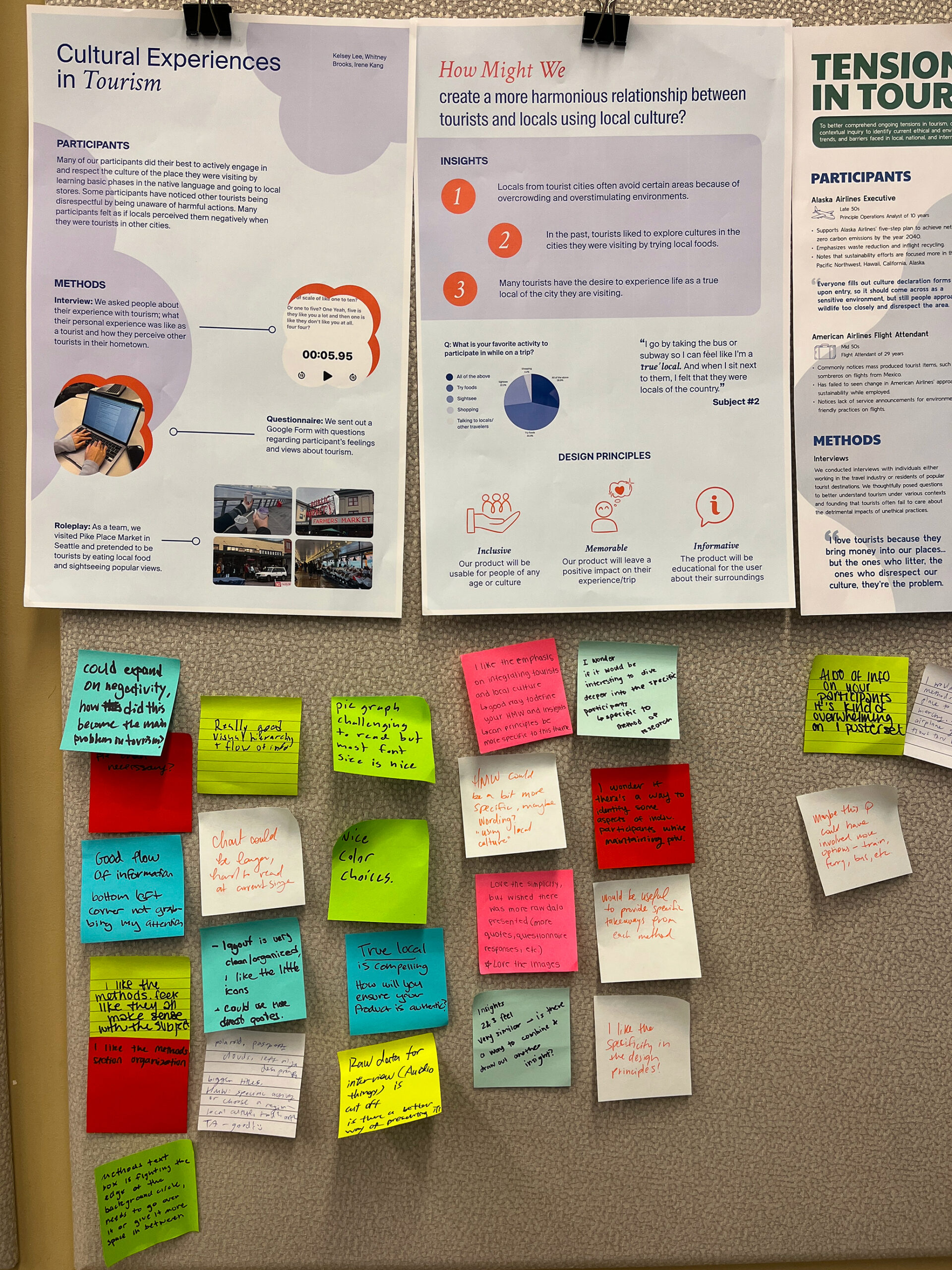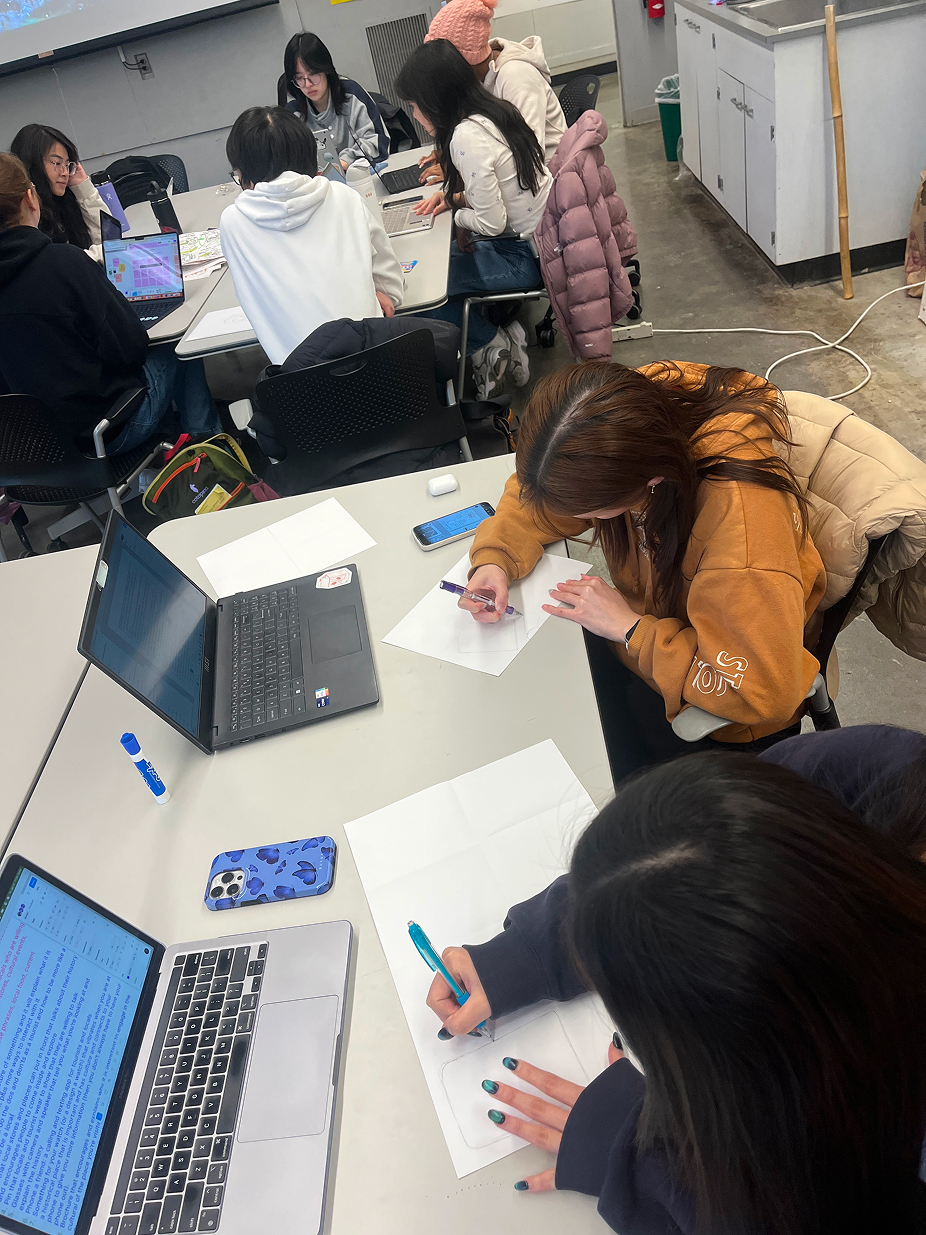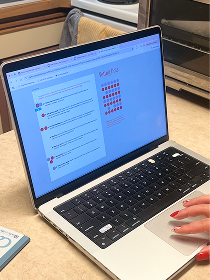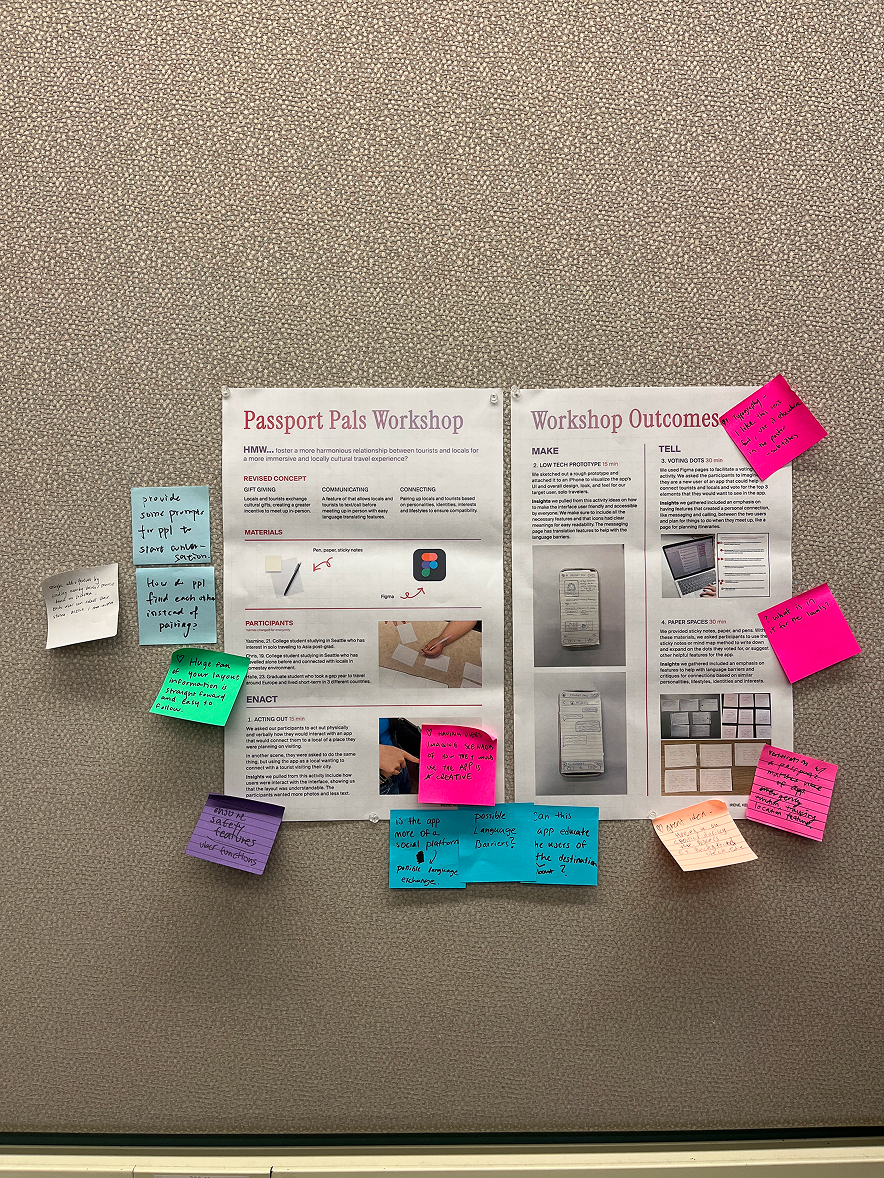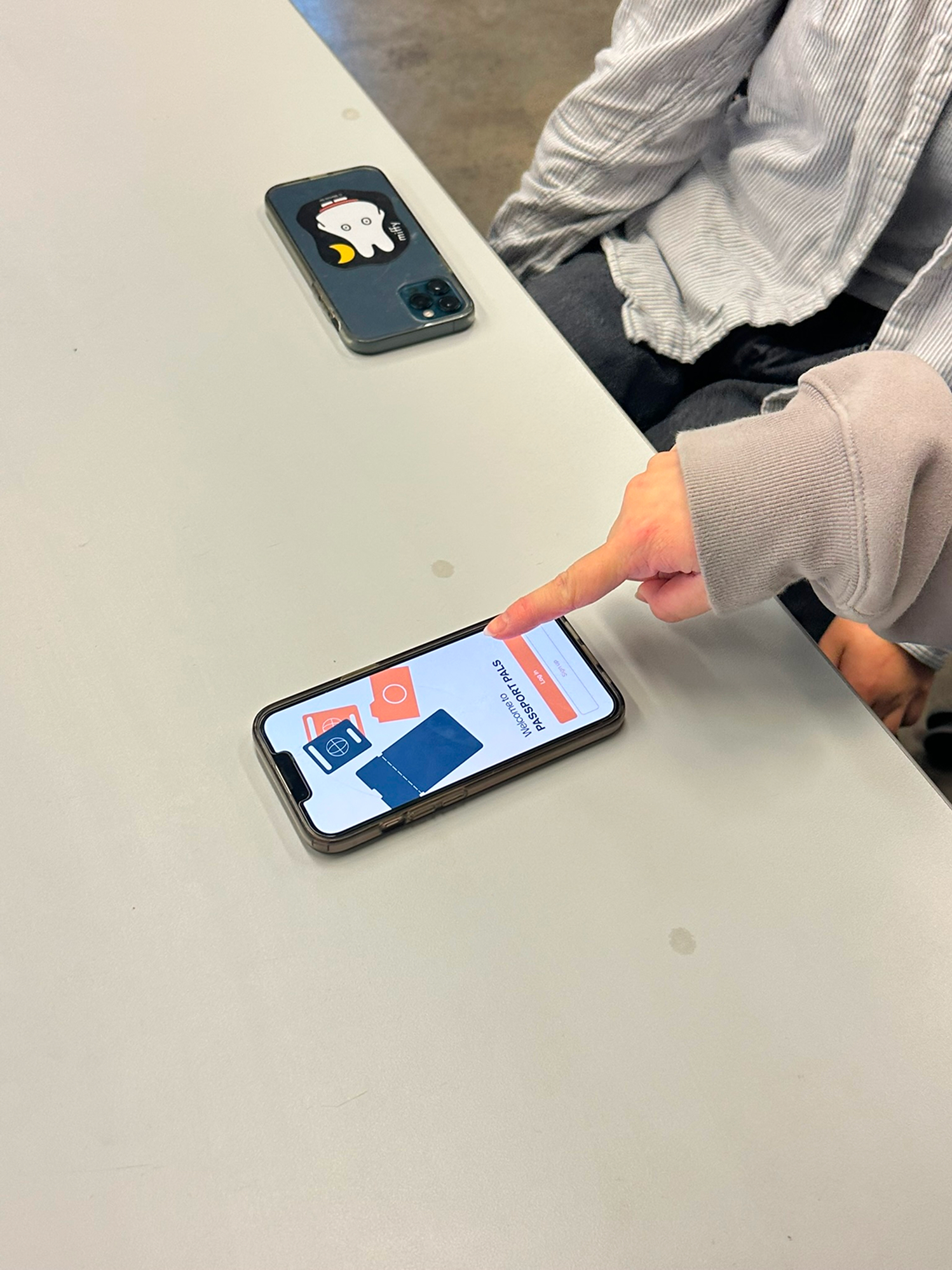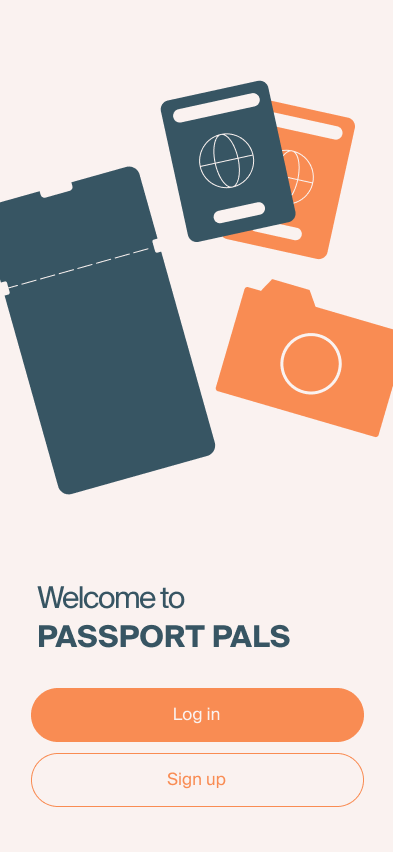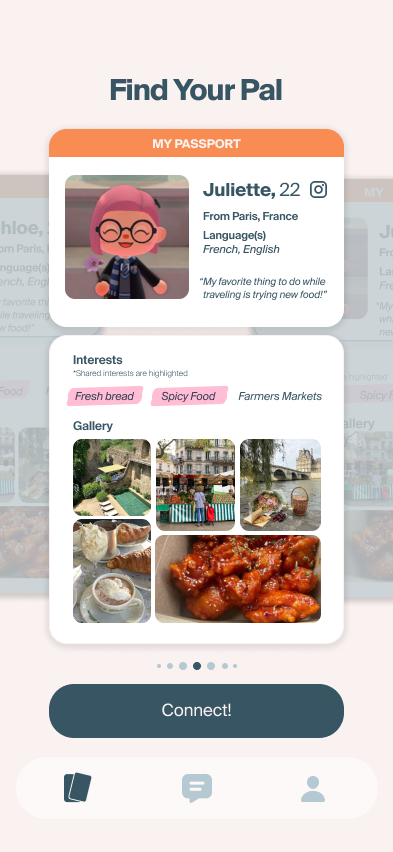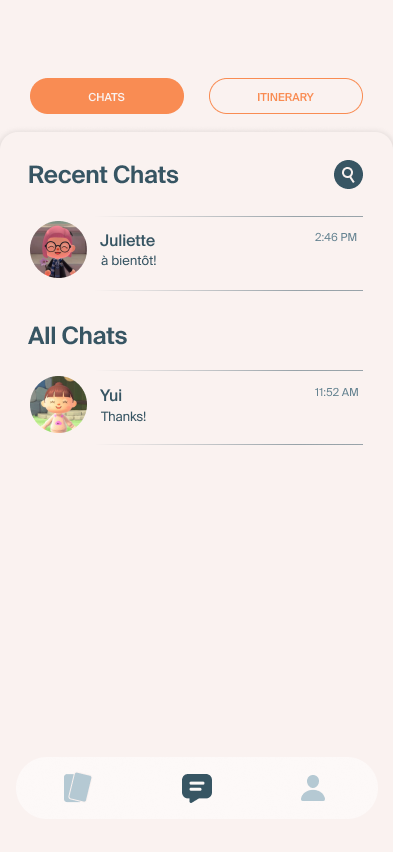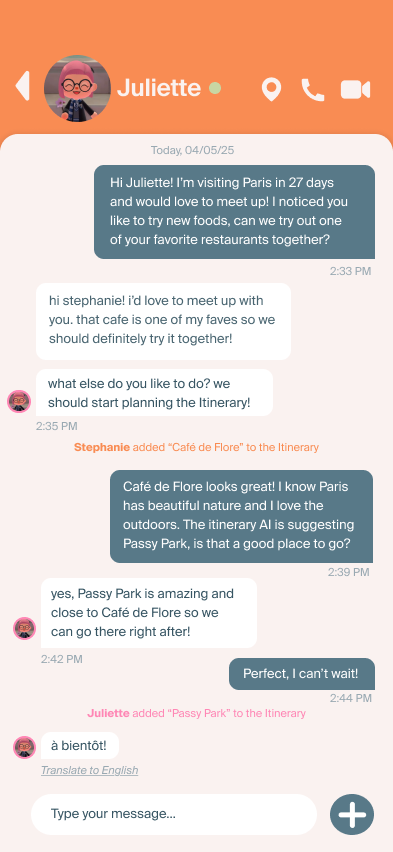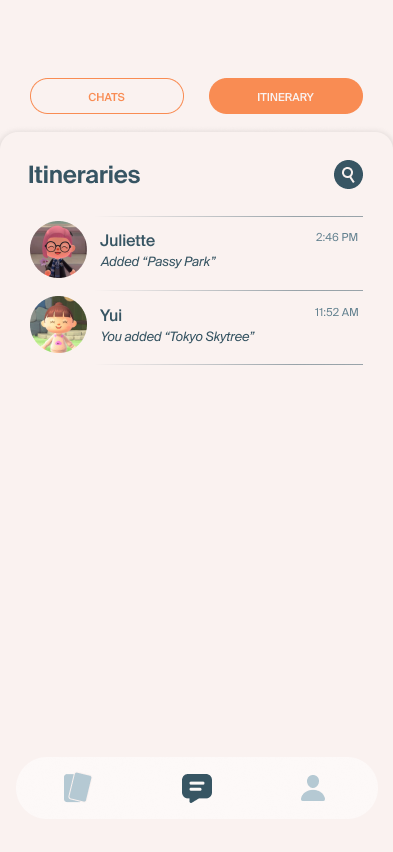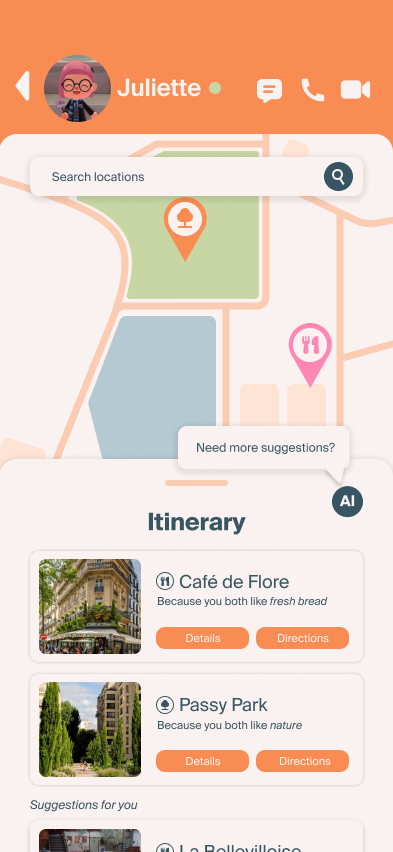Assignment Details
Given a group of three, ten weeks, and the topic of tensions in tourism, we work together to solve an issue we recognized in the relationships between tourists and the places they visit. When traveling to other countries, tourists tend to fall into tourist traps, preventing them from feeling like true locals. On the other hand, Locals may feel frustrated and hold negative feelings towards tourists due to cultural misunderstandings. We aimed to determine how design could improve the traveling experience for both tourists and locals.
What is Passport Pals?
Passport Pals is a travel app designed to connect solo travelers with locals for a more authentic and respectful international experience. By pairing travelers with locals, Passport Pals fosters cultural exchange, helping tourists prepare for their trip, navigate respectfully, and feel less alone. Locals also gain insight into new cultures without leaving home. The app encourages meaningful connections that go beyond just travel.
The Process
User Research
During the user research phase, we learned how to conduct research using three different methods: interviews, questionnaires, and roleplay. We made and sent out a questionnaire asking people about their favorite activities when traveling to another country, how they feel about tourists in their hometowns, and how they feel as tourists. We each interviewed a person for more in-depth answers to our questions. To gain some first-hand information, we used the roleplay method and went to Pike Place, observing tourists and pretending to be ones exploring the culture in Seattle. After collecting all the data, we created two posters to showcase our methods, insights, and our first draft of our how might we statement, which states the problem we are trying to solve. From our research, we discovered that many tourists do not get an authentic experience when visiting a country due to their lack of knowledge. Additionally, locals tend to avoid trendy tourist attractions due to being overcrowded and overstimulating. I learned how to do contextual inquiry and conduct research to gain information about a topic. From that research, we can develop a statement that frames our uncovered design problem.
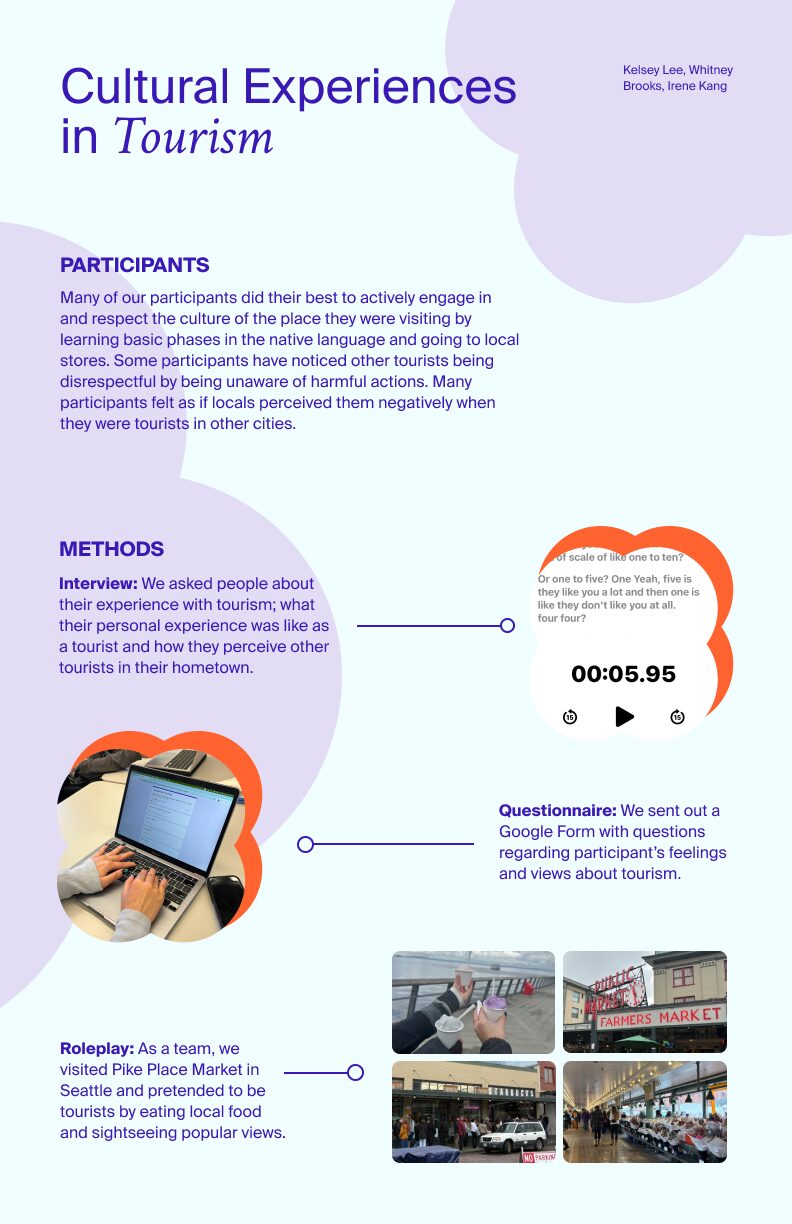
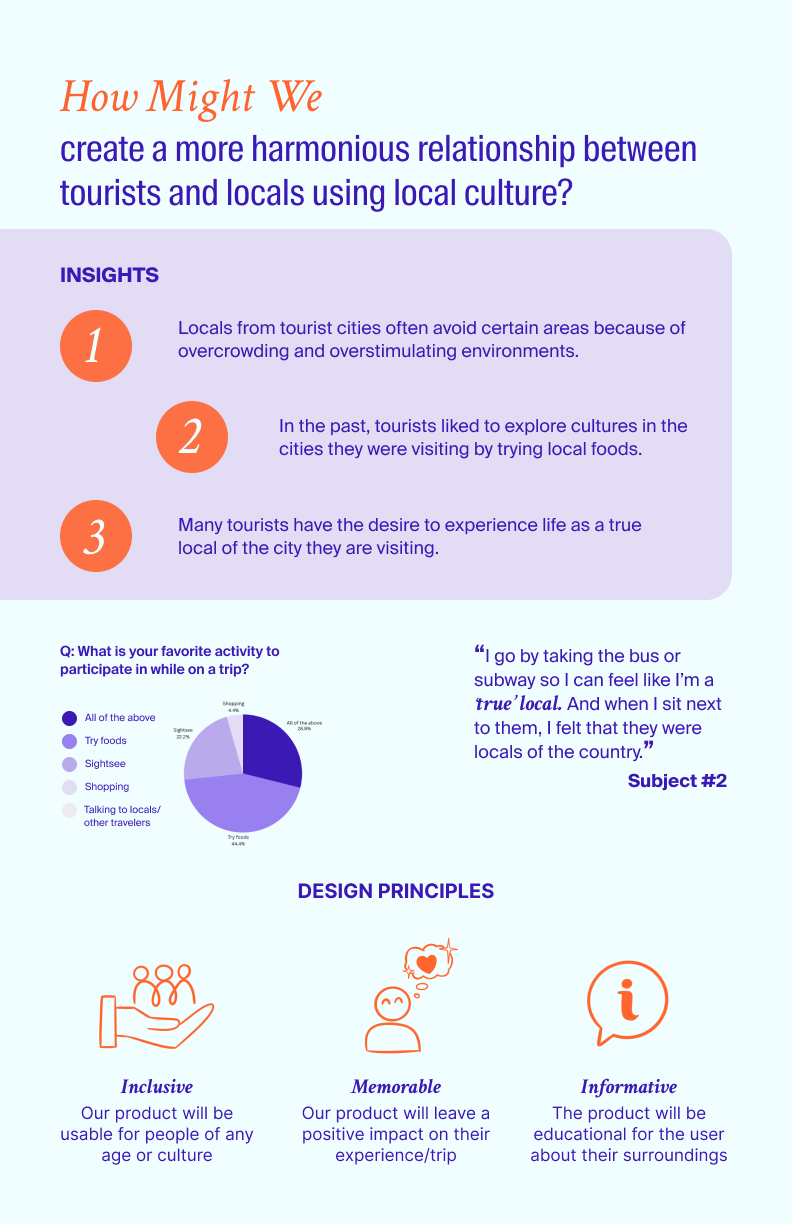
Our Challenge
How might we foster a more harmonious relationship between tourists and locals for a more immersive and locally cultural travel experience?How might we foster a more harmonious relationship between tourists and locals for a more immersive and locally cultural travel experience?
Ideation + Downselection
After uncovering the problem, we started to brainstorm solutions. We started with 60 ideas ranging from digital apps and objects to physical products to physical spaces. We each sketched out 30 of the 60 to visualize our ideas and see how useful they could solve our problem. After reviewing all the ideas, it was time to down-select. We voted on our favorites and narrowed them down to three concepts, each designing a poster for one of the three. The poster I created was for Passport Pals. The posters included the idea of how it could solve our problem and a visual of what it might look like. Through a series of critiques and user feedback, we went with Passport Pals. I learned how to generate a large quantity of ideas and visualize them in a clear but fast way.
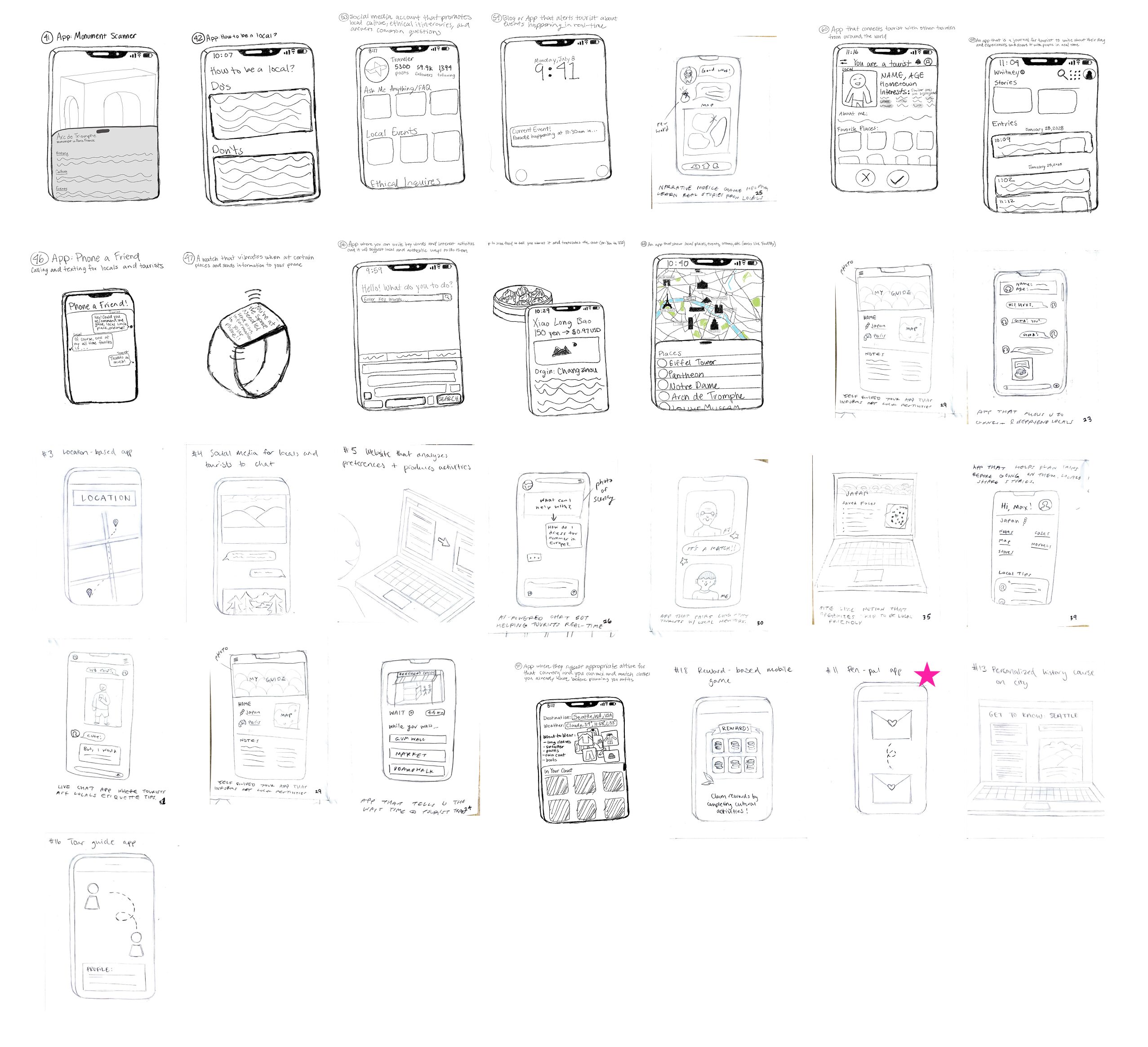
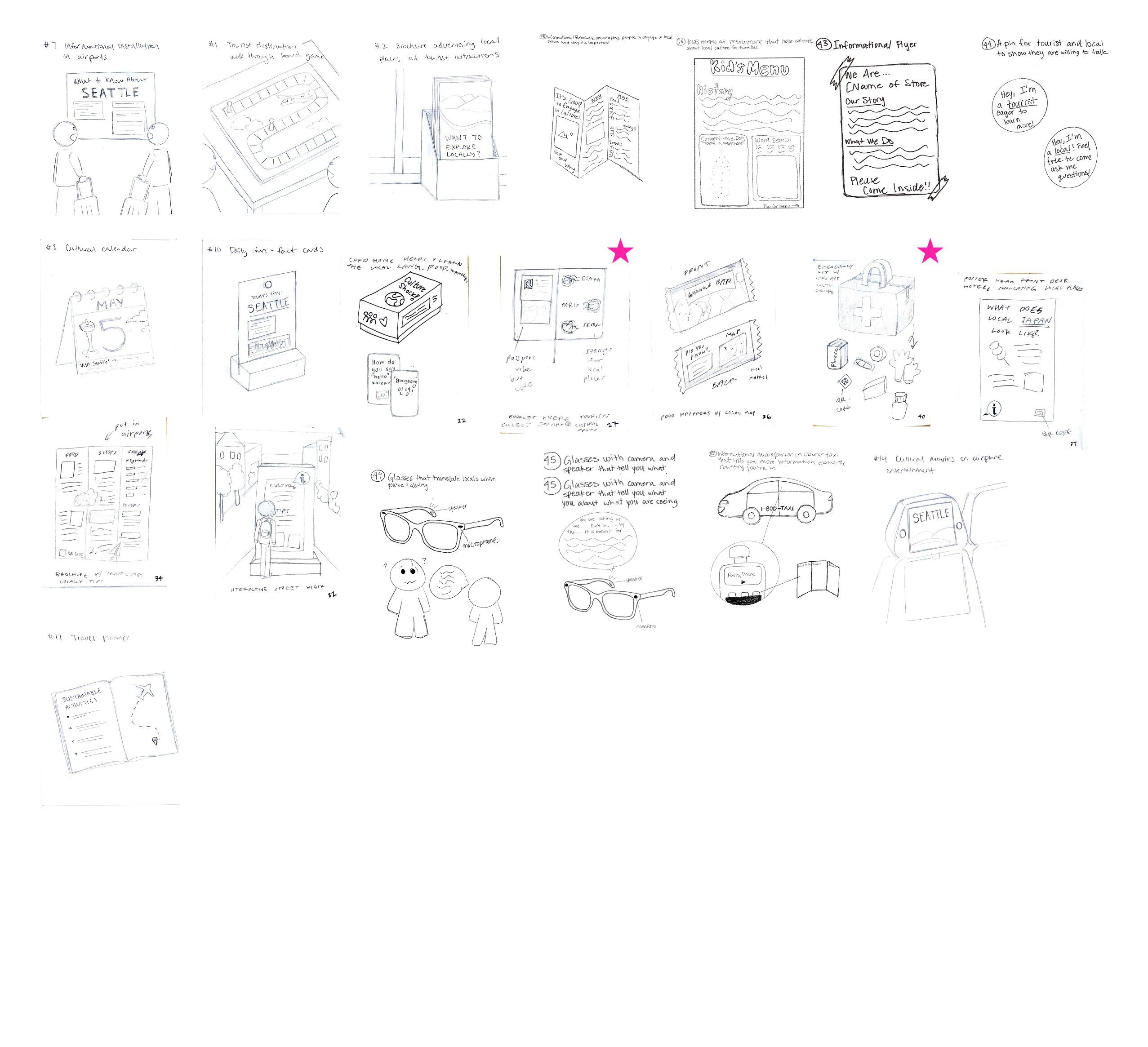

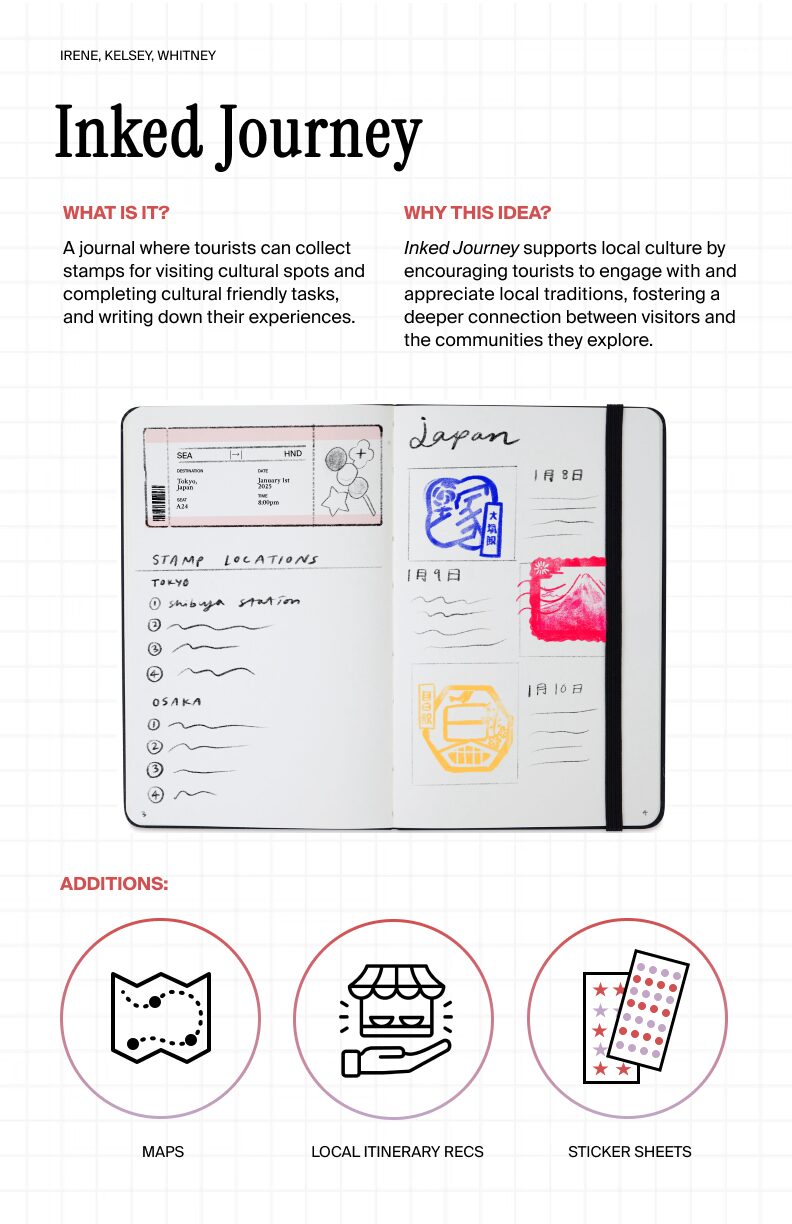
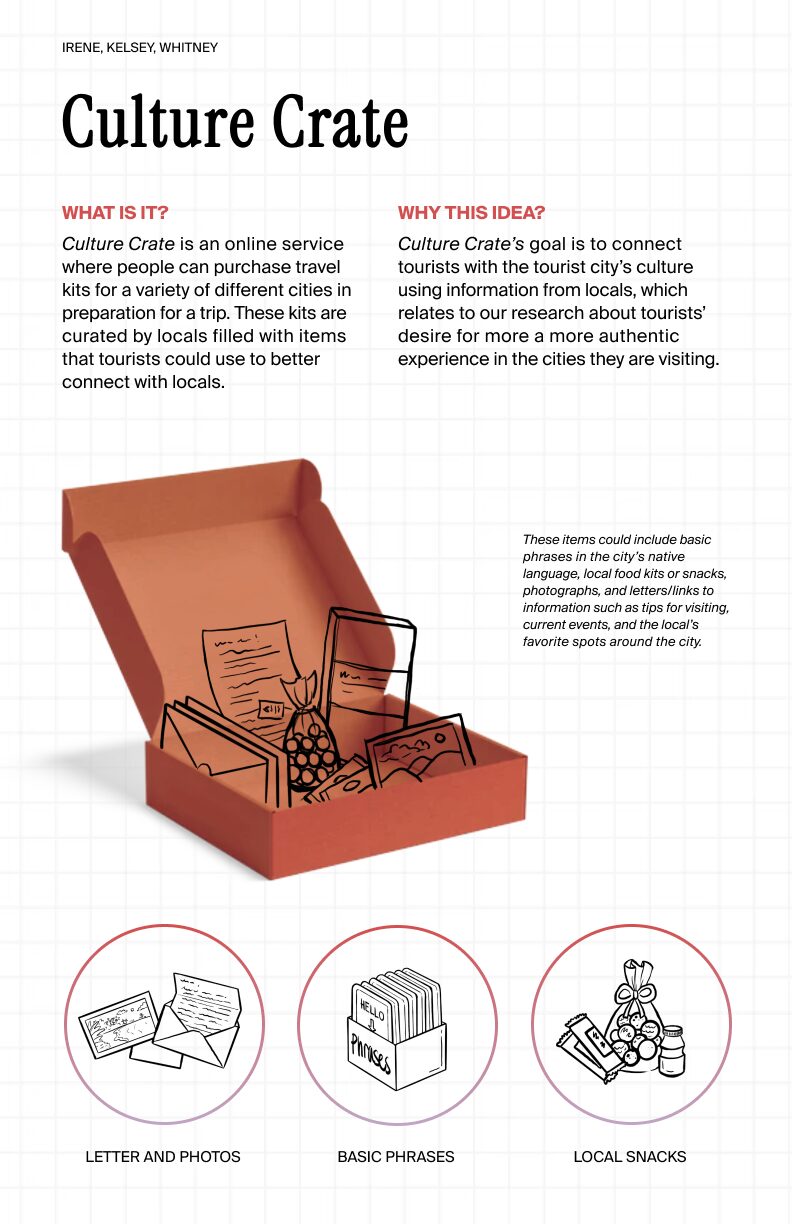
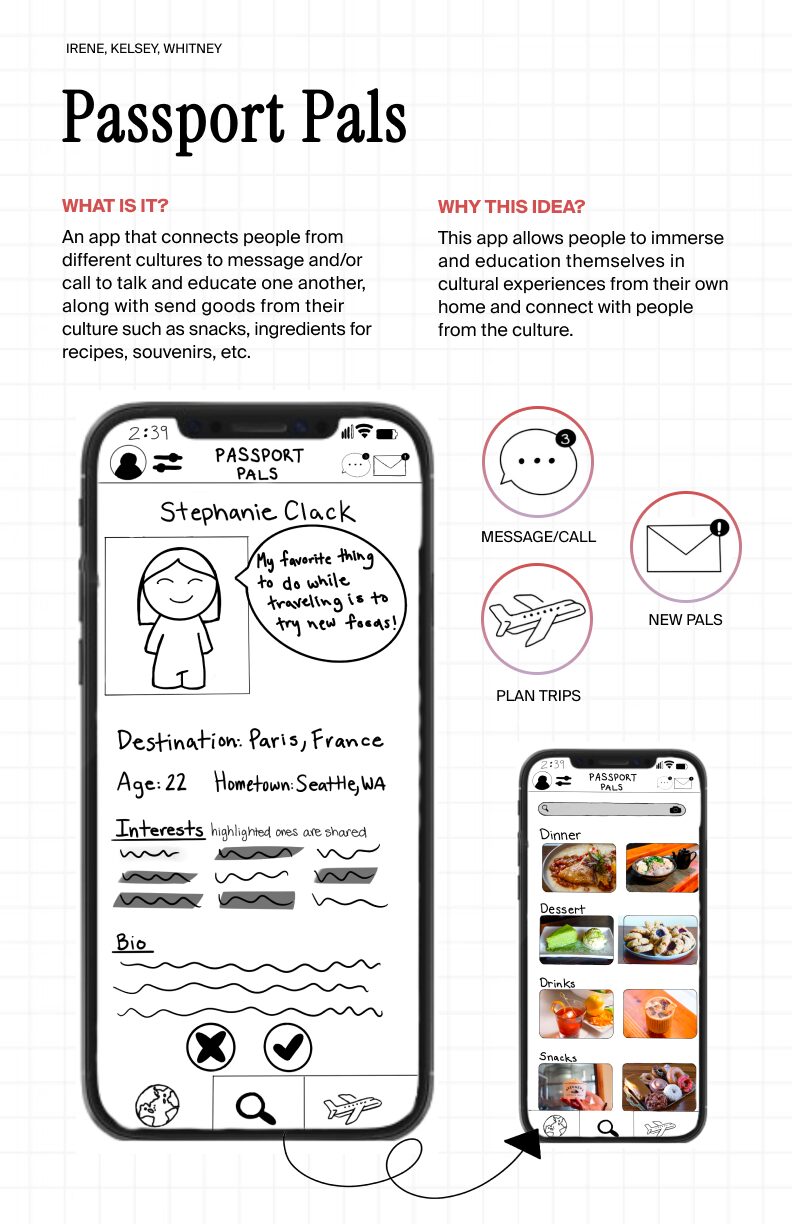
Participatory Design Workshop
Once our general idea was solidified, we did a series of workshops to gain more insights on moving forward with our concept. We did four workshops, including acting out, tech prototype, voting dots, and paper spaces. Through each workshop, we gained a better understanding of how to make our app. We discovered what features were necessary and what information should be included on each interface. We then designed a poster to showcase our workshops, the insights we gathered from each, and our revised concept. Through an in-class critique of our posters, we were able to refine our idea of the future and discover unanswered questions, such as an incentive for locals to use our app. I learned about participatory design and how to plan and conduct a workshop that is useful to our current design process.
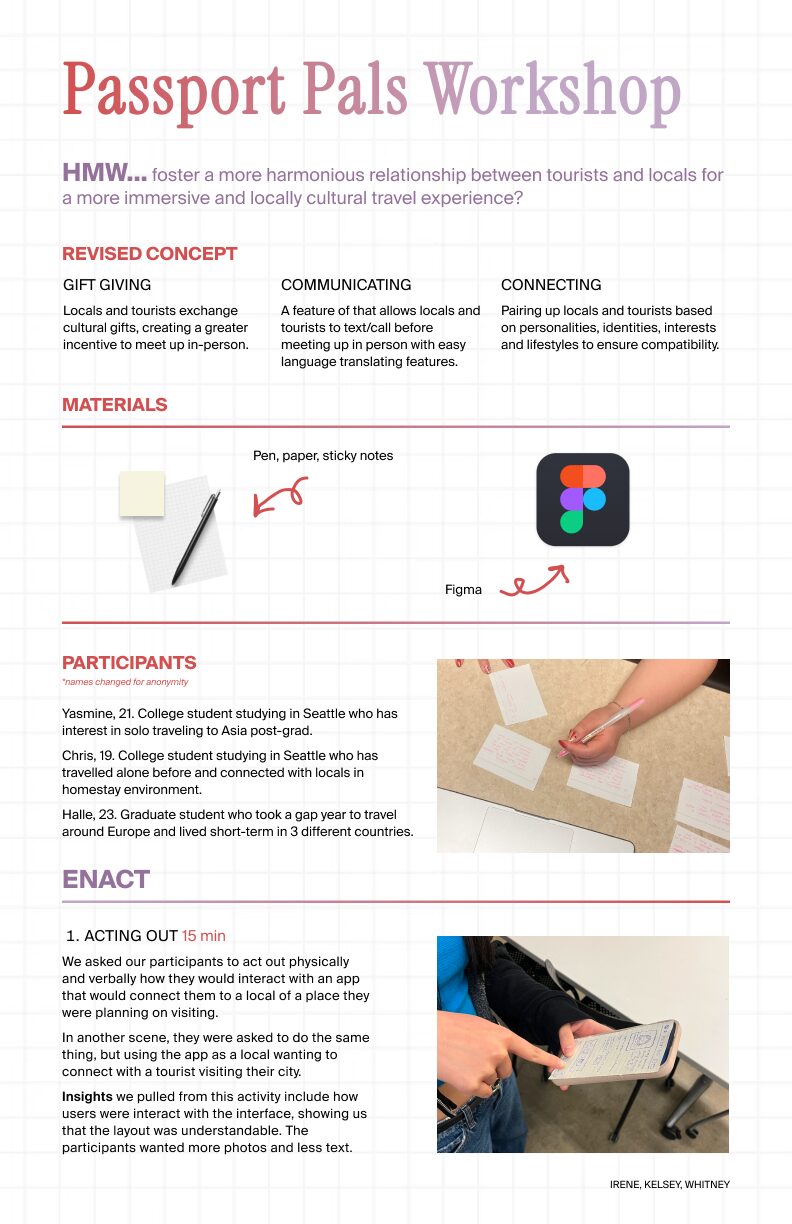
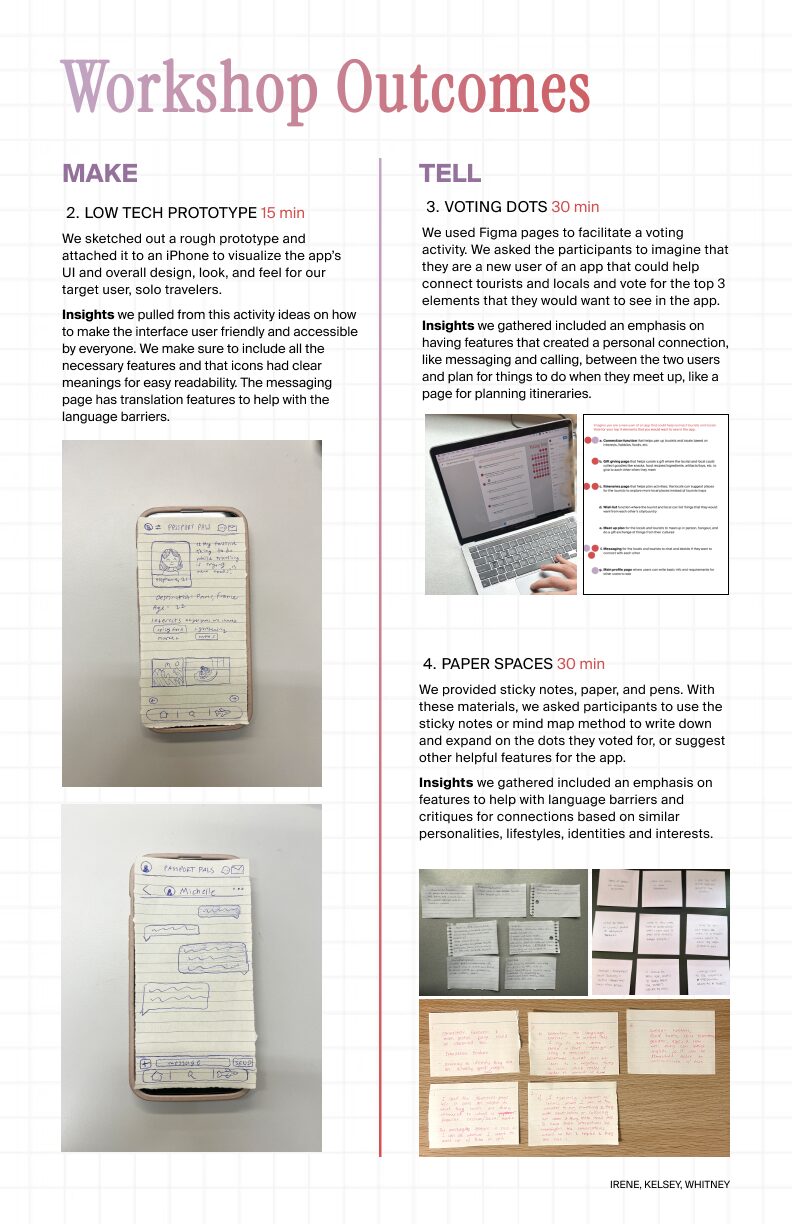
Storyboarding
Now that our app was more developed, we created a storyboard to display our app and its opportunity, design, and impact. It illustrate how a use would use our design proposal. We drew out visuals for how the scenario would play out, along with short captions describing each visual. I drew the first three panels of the storyboard, showing the opportunity for someone to use Passport Pals and a bit of the design. Storyboarding helps us refine our app’s necessary interfaces and features, along with details for each interface. I learned about the role of storyboarding in the design process and how it helps to refine the final design concept.
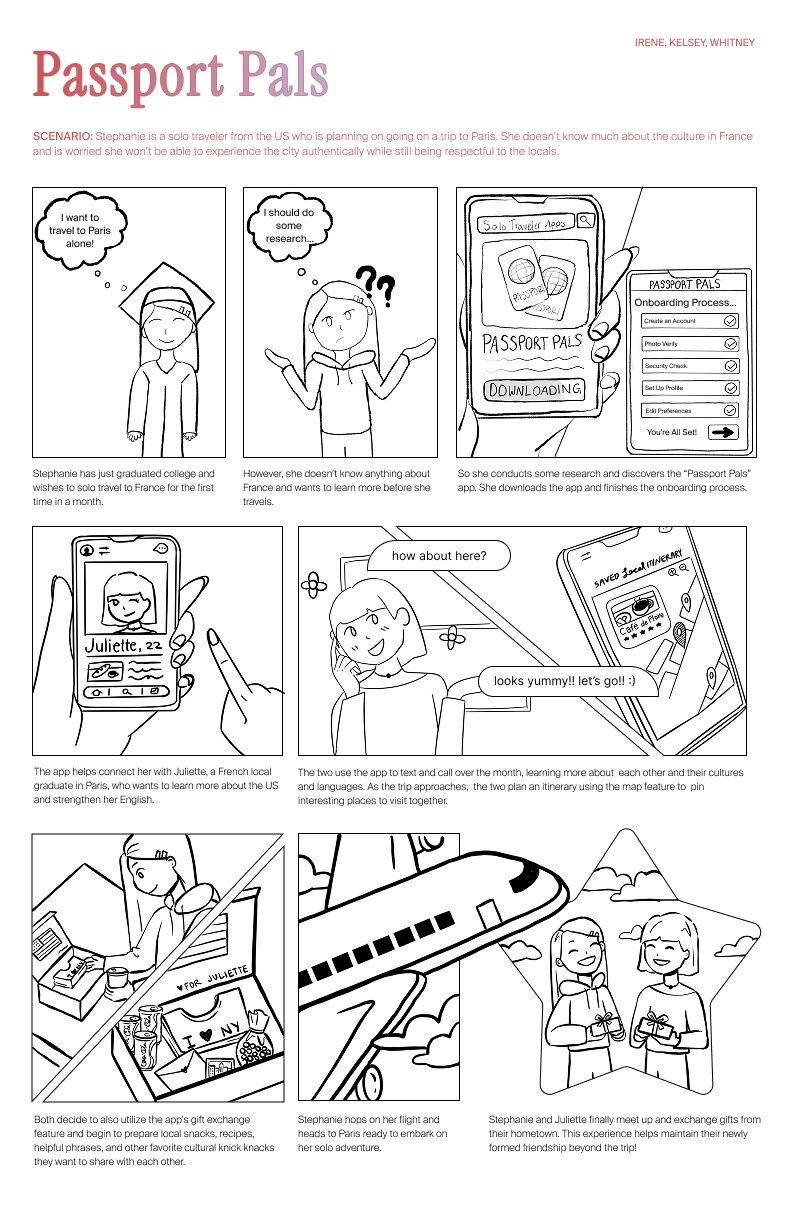
User Testing/Feedback
With the app concept being practically done, we could focus more on our app’s design portion and visuals. We created a prototype of what each interface could look like and gave it to participants to test their understanding of our concept and the useability of our app. We gained feedback about the concept in general, the overall user flow experience, and the choice of visuals. We took our findings and wrote a 500-word report on what we learned from our participants, what parts of our design proposal were confirmed, and what we planned to revise, adjust, or change. We received feedback on our visuals, including hard-to-read text due to coloring and unnecessary icons. We gained positive responses towards each of our interfaces, finalizing our app’s main features. We also ended up changing the way that users would interact with the matching interface. Initially, it was a “yes” or “no” button, but we ended up making a swiping feed where users could go back and forth and click “connect” when they wanted to be paired.
First Drafts of the Profile and Matching Interfaces

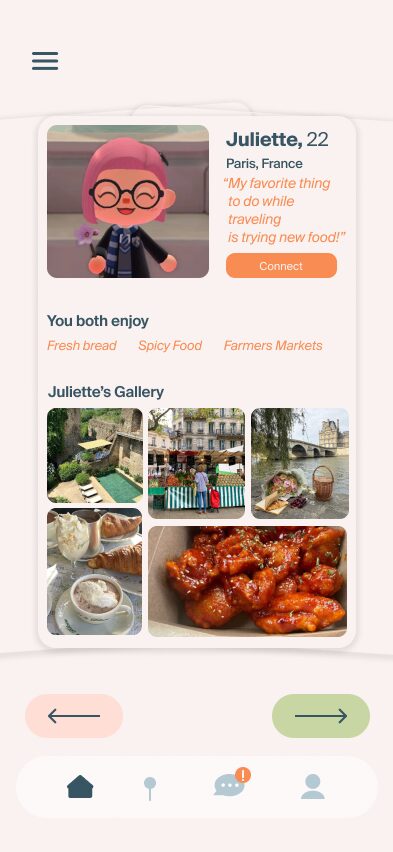
Video Mock-Up
Behind the Scenes Gallery
